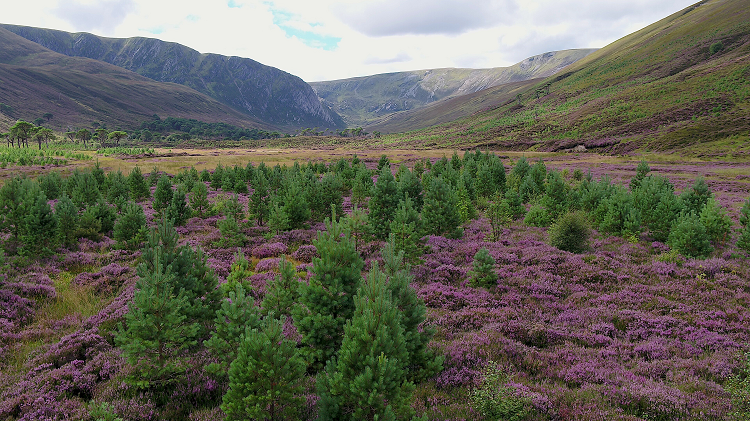Rare Caledonian pinewood restored at the Alladale wilderness reserve

This globally unique habitat can only be found in the Scottish Highlands. It provides a home for a wide variety of rare and specialised species, including pine martens, conifer specialists like crossbills and red squirrels, as well as butterflies, lichens, fungi and wildflowers such as twinflower and creeping lady’s tresses.
At its peak, woodland may have covered 70% of Scotland but historic climate change, together with forest clearance for agriculture, led to a decline. Now only 84 fragments of the important and iconic Caledonian pinewood remain, scattered across the Scottish Highlands.
A four-year study by the conservation charity Trees For Life found that 23% of all the Caledonian Pinewoods are critically threatened. A major pressure on these small fragments is high levels of deer browsing which prevents new generations of pines from establishing. The mature ‘granny’ pines get older and naturally die without a new generation of trees being able to establish and to grow in their place. A small fragment of the Caledonian Pinewood at the Alladale wilderness reserve near Bonar Bridge was in this situation and had been categorised by NatureScot as being in unfavourable and declining condition.
The Caledonian pinewood at Alladale is the second most northerly fragment of this now critically rare habitat. It was designated as a Site of Special Scientific Interest by NatureScot (then Scottish Natural Heritage) in 1979. It is also recognised at a European level as a Special Area of Conservation in 2005.
The fate of this forest fragment changed in 2003 when it was purchased by Paul Lister who set about transforming the management of the estate, restoring natural habitats and saving this important pinewood fragment.
Find out more here


